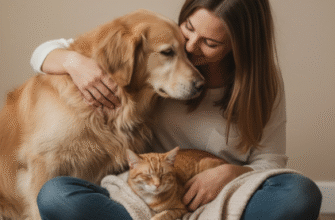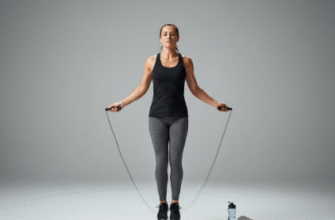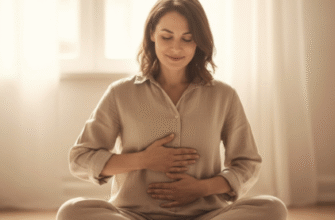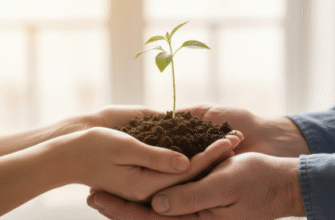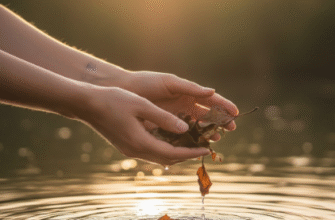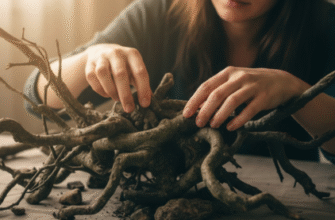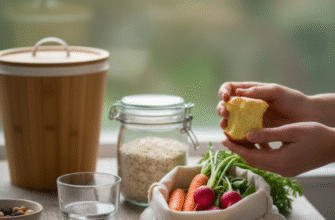Our relationship with our bodies is complex, a constantly shifting landscape influenced by personal history, societal messages, and daily experiences. It’s more than just liking or disliking what we see in the mirror; it’s about how we feel inhabiting our physical selves. This internal sense, often termed body image, deeply intertwines with our ability and willingness to express ourselves creatively. When we feel disconnected or uncomfortable in our skin, the vulnerability required for creative acts can feel daunting. Conversely, engaging in creative self-expression can become a powerful pathway toward understanding, accepting, and even celebrating our bodies, just as they are.
Think about it: creativity often asks us to show up, be seen, or share something internal. If we harbour harsh judgments about our physical form, we might shy away from activities that put our bodies front and center, like dancing or performing. We might hesitate to take up space, literally and figuratively. The fear of judgment isn’t just about the art itself, but sometimes about the person making it – the vessel carrying the creative spark. Breaking down this barrier involves recognizing that our bodies are not obstacles to creativity, but instruments through which we experience the world and translate those experiences into art.
Tuning In: Where Body Image Meets Creative Flow
The connection isn’t just about overcoming negativity; it’s also about harnessing the body’s wisdom. Our physical sensations – the tightness in our chest when anxious, the warmth spreading through us with joy, the grounding weight of our feet on the earth – are rich sources of creative information. When we pay attention to these signals, we gain access to authentic material for expression. Creative practices, in turn, can help us become more attuned to our bodies. The focus required for drawing, the physical exertion of dance, or the mindful breathing needed for singing all bring us back to the present moment and our physical reality.
Embracing creative expression doesn’t mean you suddenly have to love every aspect of your body overnight. It’s not about forcing positivity. Instead, it’s about creating a space where you can explore your feelings – positive, negative, and neutral – without judgment. It’s about shifting the focus from appearance to experience and expression. What does your body feel like today? What story does it hold? How can you give that story form, color, sound, or movement?
Unlocking Expression: Creative Ideas to Explore
Finding the right creative outlet is a personal journey. The goal isn’t to become a professional artist, but to find activities that feel engaging and allow you to connect with yourself. Here are some avenues to consider, focusing on the process rather than a perfect outcome:
Visual Explorations: Painting, Drawing, Collage
Visual arts offer a direct way to translate internal feelings into external forms. You don’t need technical skill to start.
- Abstract Emotion Painting: Forget realistic depiction. Choose colors that represent how you feel in your body right now. Use broad strokes, drips, splatters, or delicate lines. Let the physical act of applying paint be part of the expression.
- Body Mapping (Feeling Focus): Trace an outline of your body (or just a part, like your hand or torso) on a large sheet of paper. Instead of drawing features, fill the outline with colors, textures, words, or symbols representing sensations or emotions you associate with different areas.
- Expressive Self-Portraits (Beyond Likeness): Try drawing or painting a self-portrait focusing on conveying a mood or feeling rather than achieving a perfect likeness. Use exaggerated colors or distorted lines. Alternatively, create a symbolic self-portrait using objects or abstract shapes.
- Collage Your Inner Landscape: Gather magazines, newspapers, fabric scraps, photos, and other materials. Create a collage that represents your current relationship with your body, or perhaps your hopes for it. Juxtaposing different images and textures can reveal surprising connections.
- Mindful Photography: Use your phone or a camera to capture textures, light, and shadows that resonate with your internal state. You could focus on parts of your own body abstractly (the texture of skin, the shape of a hand) or find reflections of your feelings in the world around you.
Word Weaving: Journaling, Poetry, Storytelling
Words provide a powerful tool for articulating and understanding complex feelings about our bodies.
- Free-Flow Journaling: Set a timer for 10-15 minutes and write continuously about your body without censoring yourself. Don’t worry about grammar or making sense. Explore physical sensations, memories associated with your body, frustrations, or moments of appreciation.
- Sensory Poetry: Write short poems focusing on one sense at a time in relation to your body. What does your skin feel like against fabric? What sounds does your body make (breathing, heartbeat)? What does your body taste or smell like after exercise or a meal?
- Letter to Your Body: Write a letter to your body, or perhaps to a specific part of it. Express gratitude, frustration, apologies, or hopes. This can be a surprisingly cathartic exercise.
- Embodied Character Sketch: Create a fictional character and describe how they experience the world through their body. How do they move? What physical habits do they have? How do their physical sensations influence their thoughts and actions? This can offer a different perspective on embodiment.
Movement & Presence: Dance, Mindful Motion
Moving your body can be incredibly liberating and informative, reconnecting mind and physicality.
- Intuitive Movement: Put on some music that resonates with you (instrumental often works well). Close your eyes (if comfortable) and simply allow your body to move however it wants. Don’t judge the movements; just explore stretching, swaying, shaking, bouncing. Focus on the physical sensations.
- Gesture Exploration: Think of an emotion (joy, anger, peace, confusion). Explore expressing that emotion purely through physical gestures, large and small. How does your posture change? What happens with your hands, your face?
- Mindful Walking: Pay close attention to the physical sensation of walking – the contact of your feet on the ground, the swing of your arms, the rhythm of your breath. This simple act can be a grounding form of body awareness.
- Nature Movement: Go outside and mimic the movements you see in nature – the sway of trees, the flow of water, the scurrying of an animal. Connect your own physicality to the natural world.
Tactile Creations: Crafting, Making, Altering
Working with your hands on tangible materials can be grounding and empowering.
- Clothing Alteration/Adornment: Instead of trying to fit your body to clothes, make clothes fit and feel good on your body. Learn basic sewing to alter garments, or add personal touches like embroidery, patches, or paint to express your style.
- Sculpting Your Feelings: Use clay or play-dough to sculpt abstract forms representing your bodily sensations or emotions. Don’t aim for realism; focus on texture, shape, and weight.
- Comfort Objects: Knit, crochet, or sew something comforting, like a soft scarf, a small pillow, or wrist warmers. The repetitive motion can be meditative, and the finished object can provide tactile comfort.
- Nature Mandalas: Gather natural objects like leaves, stones, twigs, and flowers. Arrange them in a circular pattern, focusing on the textures, colors, and the process of creation. This is temporary art, emphasizing the act itself.
Verified Insight: Engaging in creative activities is widely recognized for its positive impact on overall well-being. Studies suggest that creative expression can help reduce stress, improve mood, and enhance self-awareness. It provides a non-verbal outlet for processing emotions and experiences. This connection between creativity and well-being underscores its potential as a tool for exploring personal themes, including one’s relationship with their body.
Sound & Voice: Music, Singing, Soundscapes
Sound is vibration, something we feel physically. Using sound and voice connects us directly to our breath and inner resonance.
- Vocal Toning: Experiment with making simple, sustained vowel sounds (ah, oh, ee, oo). Feel the vibrations in different parts of your body – chest, throat, head. This isn’t about singing “well,” but about experiencing your voice as a physical phenomenon.
- Improvised Rhythms: Use your body (clapping, stomping), found objects (tapping on a desk, rattling keys), or simple percussion instruments to create rhythms that match your energy or mood.
- Feeling Playlist: Curate a playlist of songs that resonate with different aspects of your body experience or feelings. Listen actively, paying attention to how the music makes your body feel.
- Expressive Lyric Writing: Write lyrics – even just a few lines – about a physical sensation or body-related thought. You don’t need to set it to music; the act of putting the feeling into words intended for sound can be powerful.
Starting Your Creative Journey: Gentle Encouragement
It’s natural to feel hesitant, especially if you’re carrying negative body narratives or haven’t engaged creatively in a while. Be patient and kind to yourself.
Focus on Process, Not Perfection
Let go of the need for a “good” outcome. The value lies in the act of doing, exploring, and expressing. Allow yourself to make messes, create things you don’t like, and experiment freely. The aim is self-discovery, not gallery-worthy art.
Start Small and Private
You don’t need grand gestures. Begin with 5-10 minutes of creative activity. Keep your explorations private initially if that feels safer. A small sketchbook, a personal journal, or dancing alone in your room are perfect starting points.
Listen to Your Energy
Some days you might feel like energetic movement, other days like quiet drawing or writing. Honour your capacity. Creativity doesn’t have to be intense; gentle, mindful engagement is just as valid.
Find Gentle Inspiration
Look to nature, listen to music, read poetry, or explore the work of artists whose process resonates with you (focusing on expression rather than just aesthetics). Inspiration doesn’t have to be overwhelming; sometimes, a single color or sound is enough.
Ultimately, creative self-expression offers a rich, adaptable toolkit for navigating the often-tricky terrain of body image. It allows us to bypass purely intellectual understanding and engage with our feelings and experiences on a deeper, more embodied level. By giving form to our inner world, we can foster greater self-awareness, compassion, and perhaps find new ways to appreciate the unique vessel that carries us through life. It’s not about fixing anything, but about opening a conversation – a colorful, messy, musical, moving conversation – with ourselves.

